Do you have a question about the Panasonic DMP-BDT500 and is the answer not in the manual?
Provides essential safety precautions for operating the unit and preventing hazards.
Details compliance with FCC and IC regulations for radio frequency emissions.
Explains FCC limits and offers measures to correct potential radio interference.
Lists critical warnings for fire, electric shock, or product damage prevention.
Instructions for safe installation and use of the AC power cord.
Warnings about laser radiation exposure and guidelines for proper unit placement.
Safety instructions for handling, replacing, and disposing of batteries.
Lists the items included with the unit and how to use the remote control.
Guides for cleaning the unit's exterior and discs using appropriate methods.
Guidelines for handling discs and memory cards to prevent damage and ensure longevity.
Procedure to reset settings to factory presets before disposing of or transferring the unit.
Lists compatible disc and media types and their playable contents.
Lists various disc formats that are not supported by the unit.
Explains region code restrictions for BD-Video and DVD-Video playback.
Notes on high bit rate audio formats and 3D video playback requirements.
Details on SD card types, file systems, and USB device compatibility.
Explains the function of each button on the remote control.
Describes the buttons located on the main unit.
Specifies the range and angle for the remote control signal.
Instructions on moving the highlight or pointer using the touchpad.
How to select items by tapping the touchpad.
Method for switching screens by flicking the finger on the touchpad.
Lists cases where the touchpad may not operate correctly.
How to display and navigate the KEYS screen.
Instructions for text input using the on-screen keyboard.
Method to close the KEYS screen.
How to connect the unit to a TV using HDMI for high-quality video.
How to connect the unit to a TV using composite video and audio cables.
Connecting to an amplifier/receiver via the main HDMI OUT.
Connecting to an amplifier/receiver via the secondary HDMI OUT for richer sound.
Connecting digital audio outputs using optical or coaxial cables.
Wiring instructions for multi-channel surround sound speaker systems.
How to connect the unit to a wireless router.
How to connect the unit to a network using an Ethernet cable.
Guide to initial setup for basic player configuration.
Steps to set up a wired network connection.
Steps to set up a wireless network connection.
How to find and select available wireless networks by SSID.
Guide for manually entering the network name (SSID).
Instructions for entering the encryption key (password) for secure connection.
How to change remote control codes for multi-unit use.
How the unit checks for and notifies about firmware updates.
Steps to manually download and install firmware updates.
Instructions for inserting and removing discs, SD cards, and USB devices.
How to access and navigate the HOME menu for major functions.
Explains the multi-user function for personalized settings.
Steps to create a new user profile with custom settings and icons.
Methods to switch between different user profiles.
How a registered smartphone can automatically select a user.
Instructions for starting, stopping, and resuming playback.
How to pause playback and resume from the stopped position.
How to search for specific parts of a video or audio track.
How to skip to the next or previous title, chapter, or track.
Using touchpad gestures for stop, play, pause, and frame-by-frame.
How to show top/pop-up menus and status messages.
Guide for connecting a 3D TV and viewing 3D content.
How to play photo slideshows with various settings.
Steps to connect to the internet and use an SD card for BD-Live features.
How to launch and navigate the VIERA Connect portal.
Lists the types of online services available through VIERA Connect.
Instructions for connecting a camera for video communication.
How to access and play media from a DLNA server on the network.
Using a smartphone to control media playback from a DLNA server.
Explanation of the function linking Panasonic devices via HDMI.
Steps to enable and configure VIERA Link for device control.
How the unit can automatically switch TV input and turn on the TV.
How connected VIERA Link devices turn off automatically when the TV is switched off.
Options for changing soundtrack, audio channels, and subtitles.
Settings for playback repetition, random playback, and starting slideshows.
Options to set wallpaper and user icons for personalization.
Settings for secondary video streams and soundtrack selection.
Displays disc attributes, digital audio output status, and HDMI info.
How to display and navigate the on-screen Control Panel.
General settings for picture quality, including Picture Mode and Chroma Process.
How to select picture modes and fine-tune picture quality settings.
Settings for chroma processing, detail enhancement, and resolution upscaling.
Settings for HDMI resolution, 24p output, and color modes.
Settings for Deep Color output and content type flags for optimal display.
Settings for paused video display, seamless playback, and black levels.
Options for sound effects and dialog clarity.
Settings for digital audio outputs and PCM conversion.
Options for converting multi-channel audio to 2-channel sound.
Settings for audio reformatting and enhancing sound clarity.
Adjusting audio delay and configuring analog surround sound output.
Settings for 3D playback methods and AVCHD video output.
How to select preferred languages for audio, subtitles, and menus.
Setting up wired and wireless network connections.
Network configuration for IP addresses, DNS, and proxy servers.
Settings related to VIERA Connect services like audio gain and time zone.
Configuring remote device operation and unit naming.
Controlling device access and restricting BD-Live internet usage.
Setting parental control levels for DVD and BD playback.
Restricting the usage of VIERA Connect services.
Adjusting the picture aspect ratio for different TV types.
Enabling a screen saver to prevent burn-in.
Configuring VIERA Link and unit display/sound settings.
Managing user profiles and enabling quick startup features.
Changing remote codes and accessing the touchpad operation guide.
Settings for automatic firmware checks and manual updates.
Viewing software licenses and registering for DivX content.
How to return settings to factory presets.
Troubleshooting tips when the unit or remote control does not respond.
Common issues with the remote control and their solutions.
Explains why the TV tuner mode might not be displayed.
Steps to reset or cancel ratings password.
Solutions for USB recognition problems and unit button operation.
Fixing distorted images and no video display issues.
Troubleshooting HD output and 3D video playback problems.
Addressing abnormal aspect ratios and subtitle display issues.
Resolving problems with switching audio or no sound output.
Troubleshooting discs that cannot be played or JPEG playback errors.
Common reasons why BD-Live features may not work.
Explains common messages displayed on the TV, like 'Cannot play' or 'No disc inserted'.
Explains messages shown on the unit's display, such as F99 or PLEASE WAIT.
Lists available languages for the unit's display.
A reference list of codes for various languages.
Important notes on using wireless LAN safely and reliably.
Technical details including signal system, power, dimensions, and wireless LAN standards.
Lists supported file formats (MP3, JPEG, DivX, MKV, FLAC, WAV, MPO) and their extensions.
Details on audio output via HDMI and digital terminals based on settings.
Lists various trademarks and copyright holders for technologies used.
Information regarding MPEG and AVC/VC-1 patent portfolio licenses.
Instructions for registering the device to play DivX VOD movies.
Mentions DLNA and Windows trademarks and their associations.
Information about Skype trademarks and logos.
Details on software licensed under GPL and LGPL, including source code availability.
Information on Microsoft software protection and usage restrictions.
Details about Microsoft PlayReady technology for content protection.
Mentions software licenses displayed in the Setup menu.
Explains warranty period, repair, replacement, and refund options.
How to ship the product for repair service.
Lists what is covered and excluded from the warranty.
Contact details for product information, service centers, and parts.
Details the warranty period and options for products purchased in Canada.
Specifies what is not covered by the Canadian warranty.
Contact information for product support and repair services in Canada.
Visual guide for connecting to a TV via HDMI.
Visual guide for connecting to a TV via audio/video cables.
Visual guide for connecting to TV and amplifier via HDMI.
Visual guide for connecting the AC power cord.
Instructions on using the unit's touch panel.
How to select different function screens using the KEYS button.
Instructions for starting, stopping, pausing, and resuming playback.
How to search for content and use slow-motion playback.
How to skip tracks, chapters, or titles.
| Depth | 239 mm |
|---|---|
| Width | 430 mm |
| Height | 59 mm |
| Weight | 2600 g |
| Device type | Blu-Ray player |
| Product color | Black |
| Audio decoders | Dolby Digital, Dolby Digital Plus, Dolby TrueHD, DTS, DTS-HD Master Audio |
| AC input voltage | 220 - 240 V |
| AC input frequency | 50 Hz |
| Disc types supported | BD-R, BD-R DL, BD-RE, BD-RE DL, CD, CD-R, CD-ROM, CD-RW, DVD, DVD+R, DVD+R DL, DVD+RW, DVD-R, DVD-R DL, DVD-ROM, DVD-RW |
| Dynamic range (1kHz) | 105 dB |
| Playback disc formats | Blu-Ray video, CD audio |
| Supported video modes | - |
| Card reader integrated | Yes |
| USB 2.0 ports quantity | 2 |
| Audio formats supported | FLAC, MP3 |
| Compatible memory cards | SD, SDHC, SDXC |
| Image formats supported | JPG |
| Video formats supported | AVCHD, DIVX, MKV, MP4, MPEG2 |
| Digital audio coaxial out | 1 |
| Analog signal format system | NTSC, PAL |
| Power consumption (standby) | 0.2 W |
| Power consumption (typical) | 12 W |
| Audio output channels | 7.1 channels |
| Portable | No |
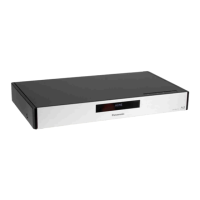
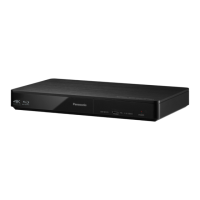
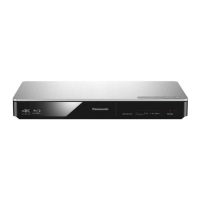

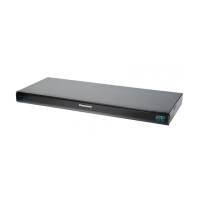
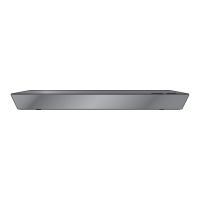
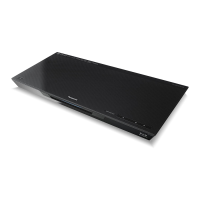
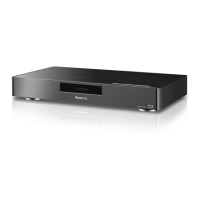

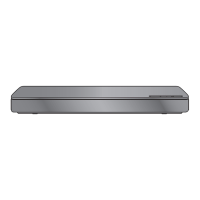
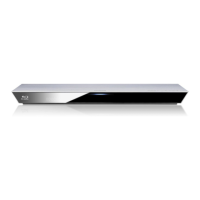
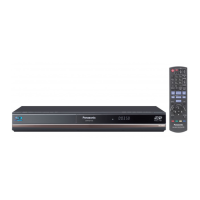
